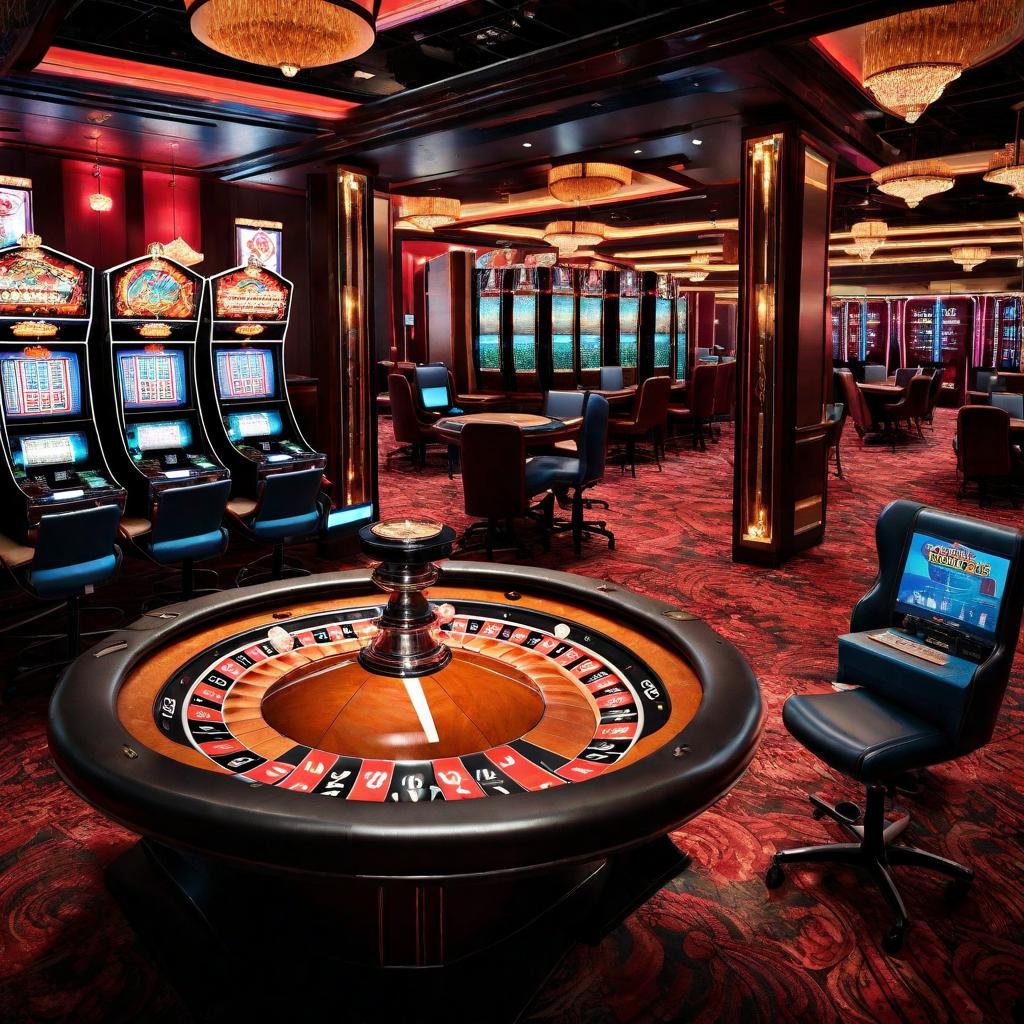
In the dynamic and stimulating world of gaming establishments, wherein luck and strategy intertwine, hues and aesthetic play a key role in attracting players. From the moment players step into a casino or access a gaming platform, they are enveloped in a visual feast that grabs their attention and entices them to explore more. Bright colors, captivating graphics, and creative layouts are meticulously crafted to create an atmosphere of thrill and anticipation, ultimately enhancing the gaming experience.
As players move through the dynamic landscape of casino games, they encounter a variety of designs that not only serve aesthetic purposes but also influence feelings and decision-making. Hues like scarlet and gold symbolize wealth and luck, while soothing blues and emeralds can create a more tranquil environment. Understanding how these elements function together enables casinos to create an inviting and energizing atmosphere that encourages players to engage with the games, spend more time at the tables, and boost their overall enjoyment.
The Psychology of Tint in Gambling Games
Hue plays a key role in the design of casino games, influencing player emotions and behaviors. Bright and bold hues, such as red and yellow, are often used to incite excitement and attract attention. These colors create a sense of urgency and vitality, encouraging gamblers to engage more enthusiastically with the activity. By strategically selecting hues, designers aim to inspire emotions of pleasure and anticipation, which can enhance the overall player experience.
Various shades also have psychological meanings that can influence how players perceive their odds of success. For example, green is commonly associated with luck and prosperity, making it a popular choice in games like the roulette wheel and poker games. This association can result players to feel more optimistic and self-assured in their gameplay, ultimately encouraging them to bet more. Understanding these connections allows game developers to craft environments that enhance player happiness and loyalty.
In addition, the layout of gambling game interfaces often employs gradients and opposing shades to instruct players’ responses. For case, winning results may be accentuated with bright, opposing hues, creating a visual reward. This method strengthens favorable outcomes and promotes repeated engagement. By utilizing the science of color, gambling establishments can create games that not only attract participants but also keep them interested and invested in their game experience.
Design Features that Attract Gamers
The aesthetic appeal of casino games is largely influenced by the implementation of bold colors. Lively and contrasting colors are deliberately chosen to create an appealing atmosphere that captures interest. For instance, reds and golden hues often signify luck and prosperity, which is why they are prevalent in the color schemes of gaming machines and game surfaces. These colors not only draw players in, but they also evoke emotions related to excitement and expectation, enhancing the overall gaming experience.
In parallel to color, the design and layout of casino games play a crucial role in player attraction. Games are designed to be user-friendly, ensuring that players can quickly understand the rules and mechanics. Accessible interfaces, along with engaging graphics and motion, help maintain gamer interest and promote extended play sessions. The physical elements, such as the feel of the controls and the sounds of the games, also contribute to a comprehensive sensory experience that keeps players immersed.
Finally, conceptual elements in gaming design can greatly influence gaming decisions. Many casino games are inspired by popular culture, myths, or exploration motifs, incorporating symbols and characters that resonate with players. These themes create a sense of immersion and relatability, making each game feel distinct. When players feel a bond to the theme, they are more likely to opt for that game over others, leading to higher participation and excitement within the casino environment. 8kbet
Case Studies: Successful Casino Table Game Designs
One key example of effective casino game design is the well-known slot machine series based around hit movies. Games such as those based on the The Wizard of Oz and Game of thrones utilize vibrant colors and superior graphics to enthrall players in well-known narratives. The use of lively visuals and engaging sound effects captures the attention of players, establishing an psychological connection to the theme. This strategy not just promotes longer play but also improves the overall gaming experience, yielding increased player retention.
Another successful case is the application of color in table games like 21 and the wheel. Casinos often develop these games with dark reds and greens, colors traditionally associated with luck and wealth. For instance, the emerald felt on a blackjack table provides a soothing effect, while the crimson accents in roulette invite thrill. This thoughtful use of color helps to establish an inviting atmosphere that encourages players to join in, satisfying their psychological impulses and boosting their enjoyment.
Finally, social casino games that include community features and vivid, dynamic designs have achieved remarkable success in engaging players. Games like Zynga’s Poker and Slot-O-Mania leverage bright colors and playful animations to forge an inviting online environment. The integration of leaderboards, social sharing options, and in-app rewards fosters competition and community, pulling players in for longer sessions. Such designs not just make the games visually appealing but also emphasize social connectivity, a crucial factor in player retention and engagement within online casino environments.
